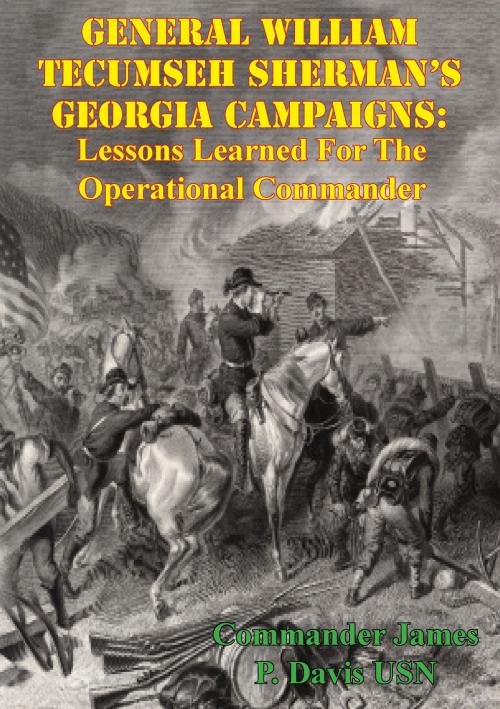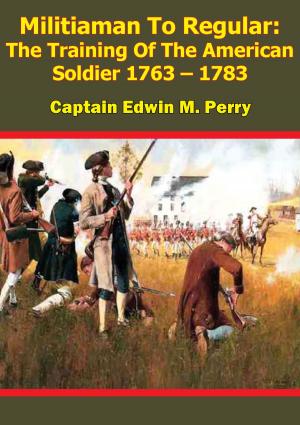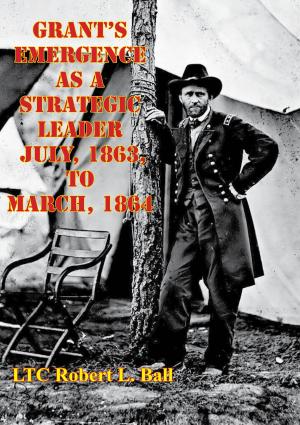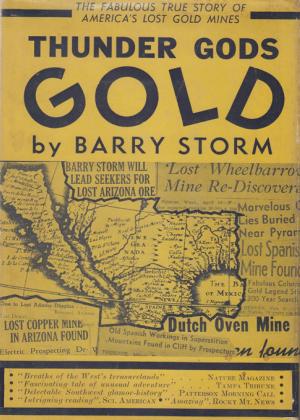General William Tecumseh Sherman's Georgia Campaigns: Lessons Learned For The Operational Commander
Nonfiction, History, Modern, 19th Century, Americas, United States, Civil War Period (1850-1877), Military| Author: | Commander James P. Davis | ISBN: | 9781782896272 |
| Publisher: | Golden Springs Publishing | Publication: | August 15, 2014 |
| Imprint: | Golden Springs Publishing | Language: | English |
| Author: | Commander James P. Davis |
| ISBN: | 9781782896272 |
| Publisher: | Golden Springs Publishing |
| Publication: | August 15, 2014 |
| Imprint: | Golden Springs Publishing |
| Language: | English |
Between May and December 1864, General William Tecumseh Sherman conducted two highly successful campaigns through Georgia, seizing Atlanta and Savannah and inflicting significant damage on Confederate military resources. Sherman’s operations were founded in thorough logistics planning, skillful movement and maneuver of a light, mobile force, and bold movement behind enemy lines without a fixed line of communications. This paper will examine and analyze General Sherman’s use of operational art, focusing on the operational factors of space, time and force and the operational functions of command and control, logistics, movement and maneuver and protection. The analysis will provide lessons learned for today’s operational commander, including applicability to the concept of Operational Maneuver from the Sea (OMFTS).
Sherman’s campaigns skillfully blended the advantages of terrain and mobility with maneuver, maintaining the initiative and freedom of action. Current defense initiatives point toward a leaner force, with the ability to respond to crises quickly with minimal logistic support. In future conflicts, U.S. forces may not have the luxury of secure bases of operations or a lengthy period to build up supplies prior to the commencement of hostilities. Sherman emphasized maneuver, mobility and logistical self-sustainment to the maximum extent possible. Success in future conflicts may depend on the ability of joint forces to operate very much like Sherman did in 1864.
Between May and December 1864, General William Tecumseh Sherman conducted two highly successful campaigns through Georgia, seizing Atlanta and Savannah and inflicting significant damage on Confederate military resources. Sherman’s operations were founded in thorough logistics planning, skillful movement and maneuver of a light, mobile force, and bold movement behind enemy lines without a fixed line of communications. This paper will examine and analyze General Sherman’s use of operational art, focusing on the operational factors of space, time and force and the operational functions of command and control, logistics, movement and maneuver and protection. The analysis will provide lessons learned for today’s operational commander, including applicability to the concept of Operational Maneuver from the Sea (OMFTS).
Sherman’s campaigns skillfully blended the advantages of terrain and mobility with maneuver, maintaining the initiative and freedom of action. Current defense initiatives point toward a leaner force, with the ability to respond to crises quickly with minimal logistic support. In future conflicts, U.S. forces may not have the luxury of secure bases of operations or a lengthy period to build up supplies prior to the commencement of hostilities. Sherman emphasized maneuver, mobility and logistical self-sustainment to the maximum extent possible. Success in future conflicts may depend on the ability of joint forces to operate very much like Sherman did in 1864.



![Cover of the book Staff Ride Handbook For The Battle Of Shiloh, 6-7 April 1862 [Illustrated Edition] by Commander James P. Davis](https://www.kuoky.com/images/2014/august/300x300/9781782895305-0ab4_300x.jpg)







![Cover of the book Red Badge of Courage [Illustrated Edition] by Commander James P. Davis](https://www.kuoky.com/images/2013/february/300x300/9781908902757-OBfC_300x.jpg)
![Cover of the book Memoirs Of The Confederate War For Independence [Illustrated Edition] by Commander James P. Davis](https://www.kuoky.com/images/2013/february/300x300/9781908902788-QQkl_300x.jpg)


